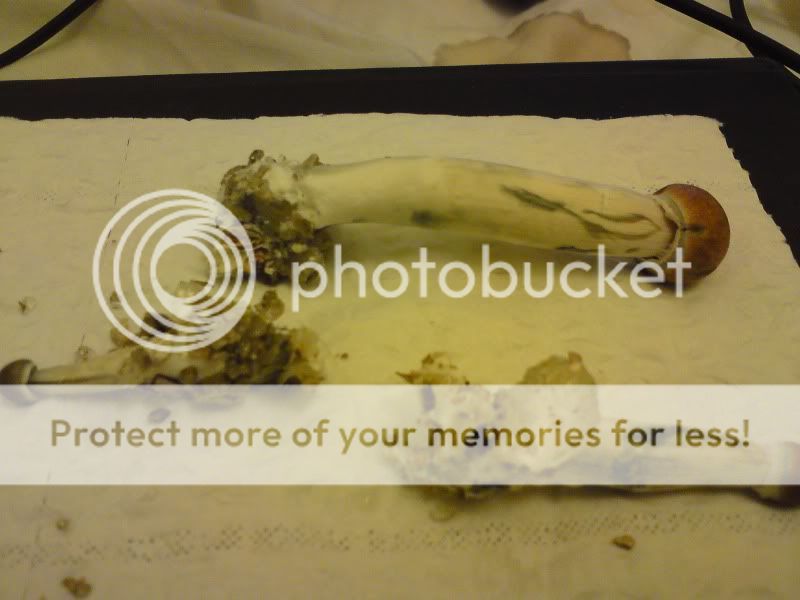Zakalwe
Bluelighter
- Joined
- Oct 25, 2009
- Messages
- 263
Hey folks, I've had one of those growkits going in my flat for the last couple of months, trying to get some P. Cubensis. All's gone well until today when i went to see if any more were ready for picking and two or three have worrying coloured stripes running down the edge (picture below in NSFW box). The colouring is the blue-green hue that denotes cellular damage and the degredation of psilocybin in contact with oxygen.
What I'm wondering is, is this a sign of mould or another infection? The temperateure in the room they were being kept in dropped very low yesterday due to an unexpected cold snap and I had to move them to a warmer room, could this be a sign of damage caused by frostbite?
If it is mould, will my having removed the affected shrooms prevent others from being affected at all, or they all likely to succumb now? Is there anything I can do to help them?
Here's a picture of the mushroom's I've removed, thanks to anyone who can offer some advice.

What I'm wondering is, is this a sign of mould or another infection? The temperateure in the room they were being kept in dropped very low yesterday due to an unexpected cold snap and I had to move them to a warmer room, could this be a sign of damage caused by frostbite?
If it is mould, will my having removed the affected shrooms prevent others from being affected at all, or they all likely to succumb now? Is there anything I can do to help them?
Here's a picture of the mushroom's I've removed, thanks to anyone who can offer some advice.
NSFW:




